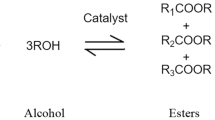Abstract
The Kliment Voroshilov (KV) heavy tank became one of the legends of the Great Patriotic War and one of the most recognizable combat vehicles of those years. The evaluation of the tank, its engineering aspects and application is still ambiguous in the scientific, popular science literature and journalism: from panegyric to dispraise. The historical memory of this combat vehicle is actively living its life not only in books, but also in virtual space, in the branches of Internet forums and computer games. The KV heavy tank was developed and put into service at the very end of 1939. A new brand of 42S armor steel was created especially for it, which was distinguished by a relatively low content of alloying elements and high adaptability for mass production. The authors have studied the stages of armor production and the difficulty in its creation, and as well as show the enormous contribution of metallurgists to the creation of the combat vehicle. As a result of engineering research and the decisive contribution of metallurgy, a formidable machine was obtained, which had thick armor (75 mm) and rather powerful armament (76.2 mm gun). At the same time, the tank had a whole range of disadvantages that reduced the effectiveness of its combat use. The general lack of design and archaic technological solutions created serious problems both in the production and in the subsequent operation of the new heavy tank. The history of the tank makes it possible to take a fresh look at the long glorious traditions of the national metallurgical school and its decisive role in the victory in the Great Patriotic War.






Similar content being viewed by others
Notes
In the manuscript on the history of military acceptance at Uralmashzavod during the war, the steel of the KV tank armor, which was used until the beginning of 1942, is designated as 28S. The coincidence of the chemical composition with the 42S grade is almost complete, with the exception of the molybdenum content, which allows for the conclusion that the point at issue is the steel 42S3).
Central State Archive of Historical and Political Documents of St. Petersburg. Fund 25. Inventory 13-a. Case 77.
Russian State Archive of Economics. Fund 8752. Inventory 4. Case 728.
The United State Archives of Chelyabinsk oblast. Fund R-792. Inventory 1. Case 57.
The United State Archives of Chelyabinsk oblast. Fund P-288. Inventory 42. Case 14.
Russian State Archives of Economics. Fund 8115. Inventory 8. File 79.
Russian State Archive of Economics. Fund 8115. Inventory 8. File 77.
United State Archives of Chelyabinsk oblast. Fund R-792 Inventory 1. Case 82.
United State Archives of Chelyabinsk oblast. Fund R-792 Inventory 1. File 84.
Russian State Archives of Economics. Fund 7914. Inventory 1. Case 199.
United State Archives of Chelyabinsk oblast. Fund P-288. Inventory 42. Case 16.
United State Archives of Chelyabinsk oblast. Fund P-288. Inventory 42. Case 17.
State Archives of the Russian Federation. Fund R-5446. Inventory 106s. Case 14.
Russian State Archives of Economics. Fund 8752. Inventory 4. Case 575.
REFERENCES
Svirin, M.N., Bronevoi shchit Stalina. Istoriya sovetskogo tanka. 1937–1943 (Stalin’s Armor Shield. History of the Soviet Tank, 1937–1943), Moscow: Eksmo, 2006.
Sorokina, T.V., et al., Oboronno-promyshlennyi kompleks SSSR nakanune Velikoi Otechestvennoi voiny (1938–iyun’ 1941 g.) (The USSR Military-Industrial Complex the Day before of the Great Patriotic War (1938–June 1941)), Moscow: Terra, 2015, vol. 4.
Solyankin, A.G., Pavlov, M.V., Pavlov, I.V., and Zheltov, I.G., Otechestvennye bronirovannye mashiny XX vek. 1905–1941 (National Armored Vehicles. 20th Century, 1905–1941), Moscow: Eksprint, 2002, vol. 1.
Oryshchenko, A.S., Tsukanov, V.V., Nigmatulin, O.E., et al., Sila broni. O tankovoi brone v 1920–1945 gg. Vklad TsNII-48: Istoriko-nauchnoi povestvovanie (Power of Armor. About Tank Armor in 1920–1945. Contribution of the Central Research Institute-48: Historical and Scientific Narrative), St. Petersburg: Professional, 2019.
Oryshchenko, A.S., Tsukanov, V.V., Savichev, S.A., Mileikovskii, A.B., and Nigmatulin, O.E., Homogeneous armor in the USSR in 1920–1947, Vopr. Materialoved., 2018, no. 4, pp. 221–239.
Mel’nikov, N.N., Gizhevskii, B.A., Zaparii, Vas.V., and Zaparii, V.V., The history of creating cannon-proof 8S armor, Chern. Met., 2019, no. 5, pp. 70–76.
Kolomiets, M.V., Tank proryva KB. “Klim Voroshilov” (Klim Voroshilov is a Breakthrough Tank), Moscow: Eksmo, 2006.
Funding
The historical part of the work was carried out with the financial support of the Russian Foundation for Basic Research within the framework of grant no. 19-09-00050; the metallurgical part of the work was carried out within the framework of the program “Spin”, State Register Entry no. AAAA-A18-118020290104-2.
Author information
Authors and Affiliations
Corresponding authors
Additional information
Translated by A. Kolemesin
About this article
Cite this article
Zaparii, V.V., Mel’nikov, N.N., Gizhevskii, B.A. et al. Soviet Metallurgy Contribution to the Creation and Serial Production of the Kliment Voroshilov (KV) Soviet Heavy Tank (1939–1941). Steel Transl. 51, 593–599 (2021). https://doi.org/10.3103/S0967091221090126
Received:
Revised:
Accepted:
Published:
Issue Date:
DOI: https://doi.org/10.3103/S0967091221090126




